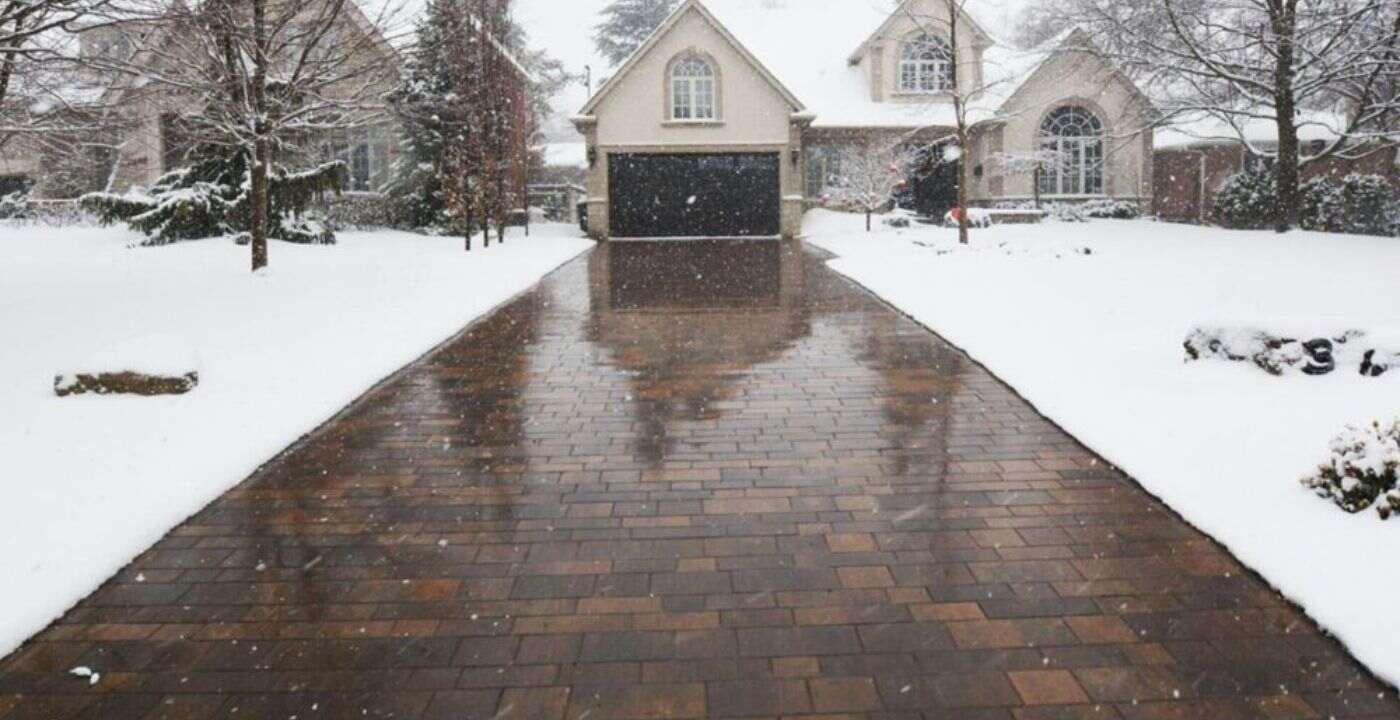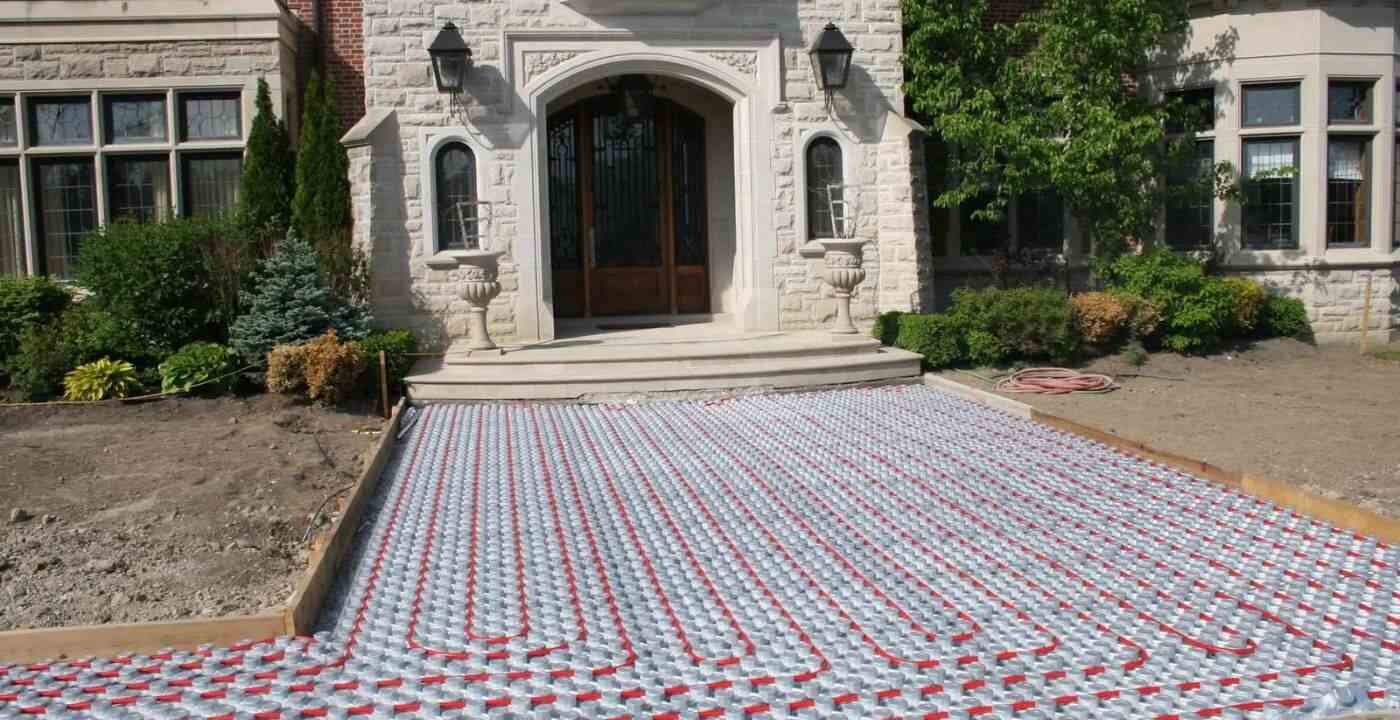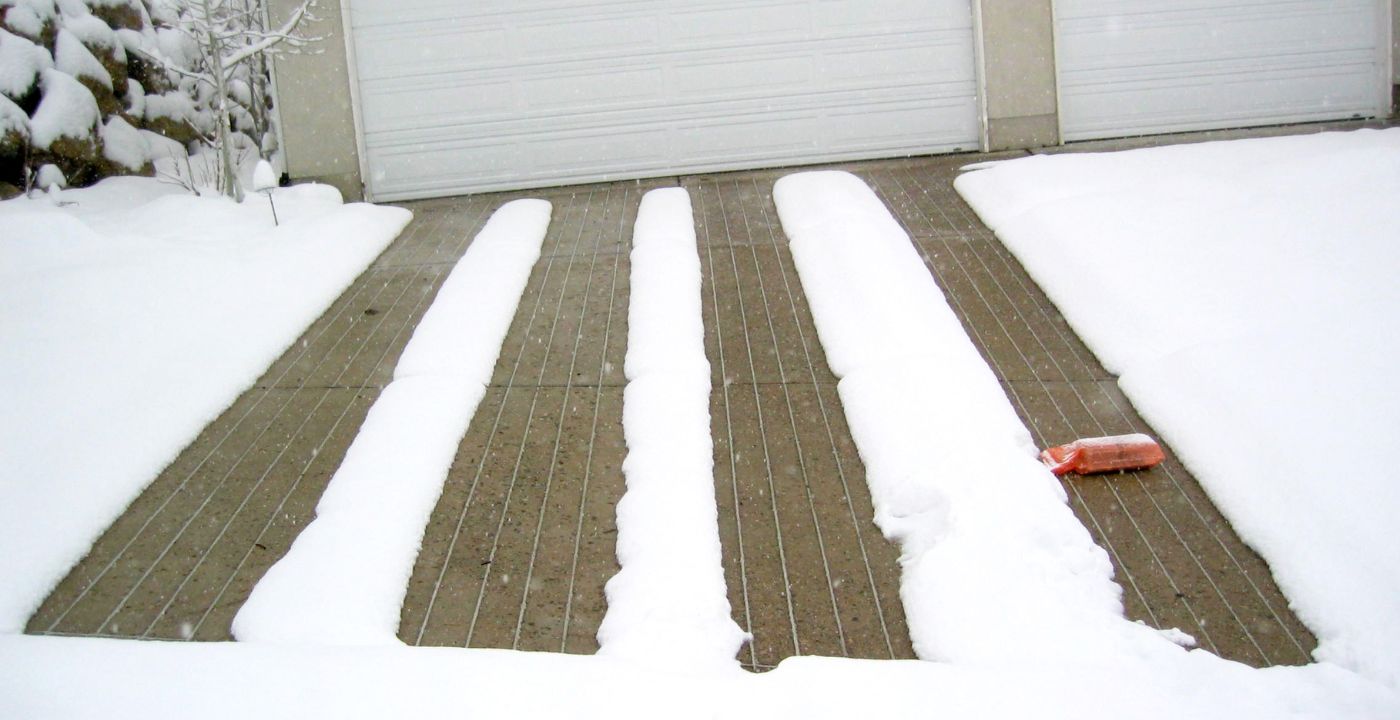Key Takeaways
- Heated driveways utilize radiant heating systems, either electric or hydronic (heated liquid), to melt snow and ice effectively.
- These systems enhance safety by reducing risks of slips and falls, especially crucial during icy conditions.
- Modern heated driveway systems come equipped with sensors that can detect precipitation and freezing temperatures, ensuring efficient energy use.
The global Heated Driveway System market was valued at US$ 782 million in 2022 and is anticipated to reach US$ 1.08 Billion by 2029.
What is a Heated Driveway?
In cold-climate areas, driveways often feature radiant heated driveway systems under their surface to melt snow and ice, eliminating the need for prompt shoveling or snow blowing.
While places like restaurant pathways and shopping center parking spaces have utilized these systems for over a quarter-century, homeowners started adopting this trend approximately 15 years ago.
It’s a particularly advantageous solution for those who cannot manually clear snow due to time constraints or physical limitations such as the elderly, disabled or infirm.
Different Kinds of Heated Driveways

Heated driveways are typically delivered through one of two types of radiant heating system: electric or hydronic (water-based).
Electric Heated Driveways
Electric setups use heating cables and mats, which are interwoven cables placed beneath the driveway.
These elements are designed to resist corrosion, keeping the driveway clear of snow and ice.
Hydronic Heated Driveways
Hydronic setups incorporate resilient PEX tubing beneath the driveway.
This tubing channels a non-freezing liquid solution (like antifreeze) via a boiler, often housed in the garage or other outbuilding, ensuring a steady warm temperature.
Pros and Cons of a Heated Driveway
If certain areas of your driveway aren’t melting snow and ice as effectively as others, it could indicate system wear or damage.
Upgrading could ensure uniform heating across the driveway.
Pros:
- No More Manual Shoveling: Say goodbye to back pain, numb fingers, and toes.
- Economical: Save on professional snow-removal services that can range from $25 to $75 per hour.
- Environmentally Friendly: Avoid harmful ice-melt chemicals and rock salt which can degrade driveway surfaces and damage surrounding plants.
- Durability: Heated driveways can extend the life of your driveway by preventing freeze-thaw cycles that can damage surfaces.
- Safety and Peace of Mind: Minimized risk of slips and falls for family and visitors.
Cons:
- Doesn't Cover Everything: The heating doesn’t extend to steps or walkways unless separately installed.
- Installation Considerations: : Often requires complete driveway replacement.
- Utility Costs: Expect an increase in electricity or gas bills.
- Potential Repair Costs:: Malfunctions might require significant parts of the driveway to be torn out for repairs. Particularly with Hydronic systems.
- Pricey Setup: Initial setup costs can be quite high, especially if the existing driveway requires replacement.
How Does a Heated Driveway Work?

Heated driveways, at their essence, are an extension of radiant heat flooring systems, a concept that will be familiar to those who’ve experienced underfloor heating in modern homes.
This technology is adaptable, functioning both indoors and outdoors. When integrated outside, especially in driveways, it becomes a guardian against the biting cold and relentless snowfalls inherent to certain climates and colder seasons.
The Radiant Heat Principle
At its core, the idea behind radiant heating is to provide warmth directly from the ground upwards.
For outdoor use, such as driveways, this technology is particularly advantageous in snowy regions.
Imagine a layer of fresh snow settling on your driveway; with radiant heating, you have an automated system that actively prevents the build up of ice and snow when the temperature drops or ice or snow is detected.
As the temperature from the heated driveway rises, the snow simply melts away. And all this can be achieved with the mere flip of a switch from inside your cozy home, or it can even be automated entirely..
Heated driveways operate through one of two systems: electric or hydronic (water-based).
Electric Heated Driveways
These driveways utilize heating cables and mats, which are essentially interwoven cables. When powered, they produce heat, effectively melting snow or ice above them.
Key Features and Functionality
- Embedded Design: Placed just below the driveway’s surface, these cables ensure effective and uniform heat distribution.
- Corrosion Resistance: These components are designed to resist corrosion, ensuring longevity and consistent performance.
- Energy Efficiency: Many modern electric systems have moisture and freeze sensors, only activating when necessary and conserving energy in the process.
Hydronic Heated Driveways
Hydronic systems use durable PEX tubing below the driveway.
This tubing circulates a non-freezing water solution through a boiler, typically situated in the garage, maintaining a consistently warm temperature.
Key Features and Functionality
- PEX Tubing: Durable PEX (cross-linked polyethylene) tubing is laid below the driveway, providing channels for the heated water solution.
- Heated Solution: A mixture of water and antifreeze is heated in a boiler and then circulated through the tubing, releasing warmth onto the driveway.
- Boiler Mechanism: Situated often in a garage or outbuilding, the boiler heats the solution, which is then pumped through the system.
- Temperature Consistency: Thermostats and controls maintain an even temperature, ensuring efficient snow melting without overheating.
Installation Considerations
For those contemplating the addition of a heated driveway, there’s good news: complete driveway replacement isn’t always necessary.
In some instances, tubing can be integrated beneath the existing driveway.
However, this decision is influenced by several factors including the time of year, soil compaction, nearby tree roots, and more.
Opting for a fresh installation sometimes guarantees that the system functions optimally.
It’s noteworthy that some systems, when retrofitted under existing driveways, might come with limited warranties or none at all.
This could impact future maintenance or repair considerations
Do Heated Driveways Work?

The concept of a heated driveway might sound like a luxury or even a fantasy for some, but these systems have been tried, tested, and proven effective for decades.
The answer is a resounding yes – heated driveways do work, and here’s how:
Efficiency
Once activated, these systems distribute heat evenly across the surface, effectively melting snow and ice.
The result? A clear and safe pathway for both vehicles and pedestrians.
It eliminates the need for manual shoveling or the use of de-icing agents, which can be harmful to the environment.
Versatility
While they are particularly beneficial for those in cold regions, heated driveways can be installed anywhere.
Even in milder climates, occasional icy patches can pose risks. A heated driveway ensures safety during those unexpected cold snaps.
Adaptability
Modern heated driveway systems come with advanced features like sensors that detect precipitation and freezing temperatures.
This means the system can activate itself when needed, ensuring efficient energy use.
Safety and Comfort
Beyond the convenience factor, heated driveways enhance safety.
By keeping the driveway clear of ice and snow, they prevent potential slips, trips, and falls.
This is especially beneficial for households with elderly members or young children.
Maintenance
One of the significant benefits of heated driveways is their low maintenance.
Once installed, they require minimal attention.
The systems are designed to be corrosion-resistant and durable, making them a long-term investment.
How to Install a Heated Driveway
Below we include the main steps of the heated driveway installation process.
It is vital you properly prepare for a heated driveway system. Especially when it comes to determining your power requirements
- Plan and Design your system
- Excavate the installation area
- Install the insulation
- Layout Heating mats or cables
- Install the Control System
- Backfill
- Pour or lay the paving
- Wire up the electrical connections
FAQs
Do heated driveways prevent snow?
Yes, heated driveways melt snow upon contact, preventing accumulation.
This means that as snow falls, it melts when it hits the warm surface of the driveway.
How thick is a heated driveway?
The thickness of the driveway would largely depend on the material used (concrete, asphalt, pavers, etc.) and not necessarily on the heating system itself.
Typically, a concrete driveway might be 4–6 inches thick.
The heating elements, like cables or tubes, are relatively thin but will require some space beneath the surface.
Do heated driveways work in extreme cold?
Heated driveways are designed to function effectively in cold climates and can work efficiently in extreme cold conditions.
Many systems will continue to work efficiently in temperatures of -30C or more.
Do you need a boiler for a heated driveway?
This is dependent on the system.
For hydronic (water-based) heated driveways, yes, you would need a boiler.
The boiler heats the antifreeze solution that circulates through the tubing beneath the driveway. Electric systems do not require a boiler.
Are heated driveways eco-friendly?
There are both pros and cons in terms of eco-friendliness. On the one hand, heated driveways eliminate the need for chemical de-icers, which can run off into local waterways and harm aquatic life.
They also reduce the physical disturbance of shoveling, which can help maintain the integrity of the driveway material for a longer time.
On the downside, they use energy, which, if sourced from non-renewable resources, can have a carbon footprint.
However, if the electricity used is sourced from renewable energy, the environmental impact is lessened.
Can a heated driveway system be integrated with renewable energy sources?
Yes, some homeowners pair their systems with solar panels or other renewable energy sources to offset energy costs.
Do heated driveways require a lot of maintenance?
Once installed, they generally require minimal maintenance. However, periodic checks are advisable to ensure everything is running smoothly.
It is far more likely you will need to carry out maintenance on hydronic systems which are more subject to failures such as leaks that you don’t get with electrical systems like heating mats.
Do heated driveways require a lot of maintenance?
With proper installation and regular maintenance, a heated driveway system can last upwards of 20 years.
The lifespan might vary based on the type (electric or hydronic) and the quality of components used.
Conclusion
Heated driveways aren’t just about luxury; they’re about safety, convenience, and long-term benefits.
By eliminating the need for manual snow removal and reducing the risks of icy accidents, they provide a clear return on investment over time.
Given the advancements in technology and the growing need for safer home environments, investing in a heated driveway seems more of a necessity than a luxury for those living in colder regions.
Give us a call to get the ball rolling on your new heated driveway.





